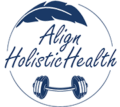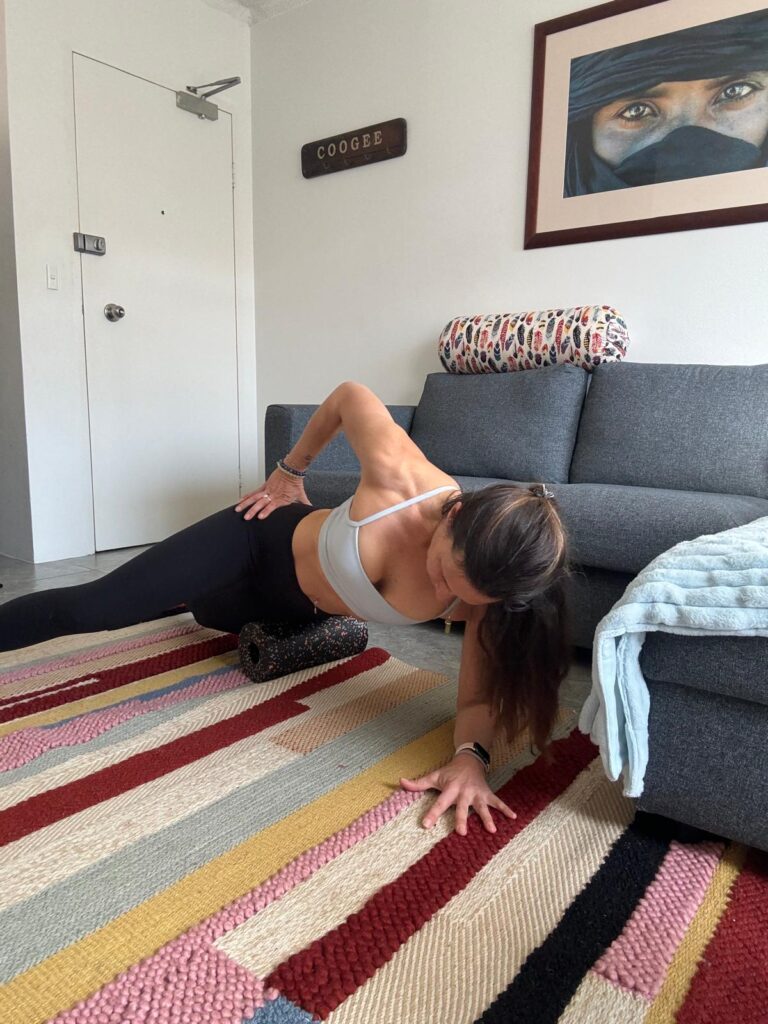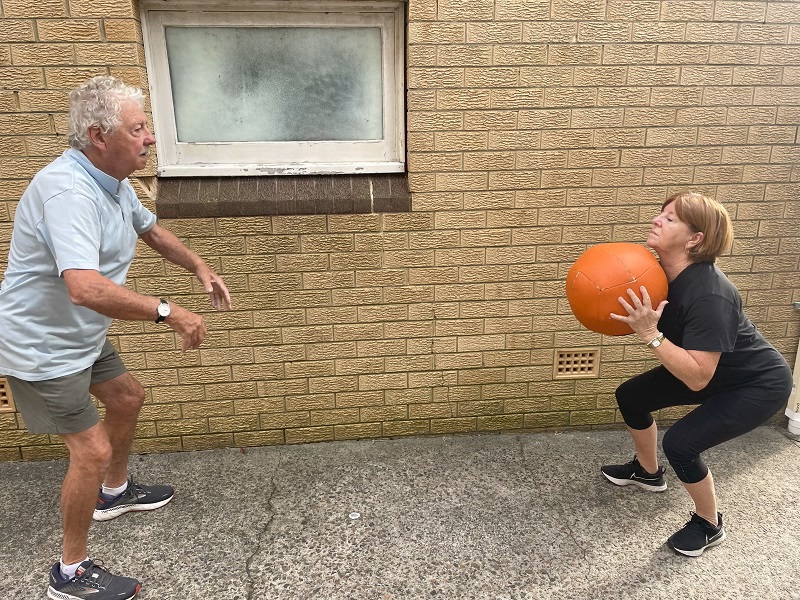Must do to improve your posture – myofascial release (MFR)
I am not sure if this is an age thing (not that I am that old haha) but I have long been interested in holistic ways to get the body back into the best state and shape possible.
In 2017 I completed the “Black Roll Fascia Training”. Ever since then, I have been using my Black Roll equipment or the foam roller for various parts of my body to find some pain relief and bringing my body into a more aligned state.
A few years ago, when still working at E-lab in Waverley, I first found out about Functional Patterns as one of the owners there was practising it religiously. I was intrigued. And now a few years later, I decided to complete the 10 week course to further educate myself and my clients.
What is Myofascial release?
Myofascial release is a therapeutic technique used to treat skeletal muscle immobility and pain by relaxing contracted muscles, improving blood and lymphatic circulation, and stimulating the stretch reflex in muscles. It involves applying gentle, sustained pressure into the myofascial connective tissue to eliminate fascial restrictions and restore motion.
Fascia is a thin, tough, elastic type of connective tissue that wraps around muscles, providing support and protection. When muscles are injured or stressed, the fascia can become tight and cause pain or restricted movement. Myofascial release aims to release this tightness and improve the function of the affected area.
There are various techniques used in myofascial release, including direct and indirect methods. Direct myofascial release applies pressure directly to the restricted fascia, while indirect myofascial release gently stretches the fascia until resistance is felt and held until the tissue releases.

The difference between myofascial release and massage therapy
MFR is
- cost effective
- performed at your own convenience
- you are in control of placement, pressure and duration
- enhances self-awareness of body mechanics with careful practice
Massage is
- expensive when repeated often
- needs scheduling and commuting
- they control the massage
- temporary relief and less effort from your end, but doesn’t always result in gained knowledge
Must do to improve your posture – myofascial release (MFR) and what is Functional Patterns? https://functionalpatterns.com/
You might wonder what Functional Patterns has to do with MFR. In order to exercise properly, you’ll need to release all tension and tightness in your body as much as possible. The first step to a happier and healthier body is to “foam roll” & “practise MFR”. The reason why I am mentioning both is that you can achieve success with rolling the fascia but also perform trigger point release. Both ways are effective but for some areas, one works better than the other.
Functional patterns, in the context of human movement and exercise, refer to movements or exercises that mimic and improve everyday activities and tasks. The concept emphasizes training movements that have practical applications in daily life or sports, rather than focusing solely on isolated muscle groups or specific exercises.
Key principles of functional patterns include:
- Multi-joint Movements: Functional patterns often involve multiple joints and muscle groups working together in a coordinated manner, similar to how the body moves during daily activities.
- Integration of Core Stability: They emphasize core stability and strength, as the core muscles play a crucial role in stabilizing the spine and transferring forces between the upper and lower body during movements.
- Balance and Coordination: Exercises and movements focus on improving balance, coordination, and proprioception (awareness of body position in space), which are essential for functional activities.
- Real-life Applications: Functional patterns aim to improve performance in activities of daily living, sports, and recreational activities by enhancing movement efficiency, strength, and flexibility in functional movement patterns.
Examples of exercises and movements that fall under functional patterns include:
- Squatting: Mimicking the motion of sitting down and standing up, which strengthens the lower body and improves mobility in the hips, knees, and ankles.
- Lunging: Similar to stepping movements used in walking or running, which improve leg strength, balance, and coordination.
- Pushing and Pulling: Exercises that involve pushing (e.g., pushing a door open) and pulling (e.g., pulling a heavy object towards oneself), which strengthen the upper body and core.
- Carrying and Lifting: Activities that involve carrying objects (e.g., groceries) or lifting (e.g., lifting a child), which improve functional strength and stability.

Functional patterns are often incorporated into rehabilitation programs, athletic training, and fitness routines to improve overall movement quality and reduce the risk of injury by promoting balanced strength and flexibility across multiple muscle groups. They are also tailored to individual needs and abilities to ensure safe and effective performance.
I am excited to explore more of this course, and I am about to go into week 3. There is nothing more satisfying than helping my clients to feel better, happier and improve their overall wellbeing, mine included.
Stay tuned and follow my journey as I’ll be sharing it with you.



